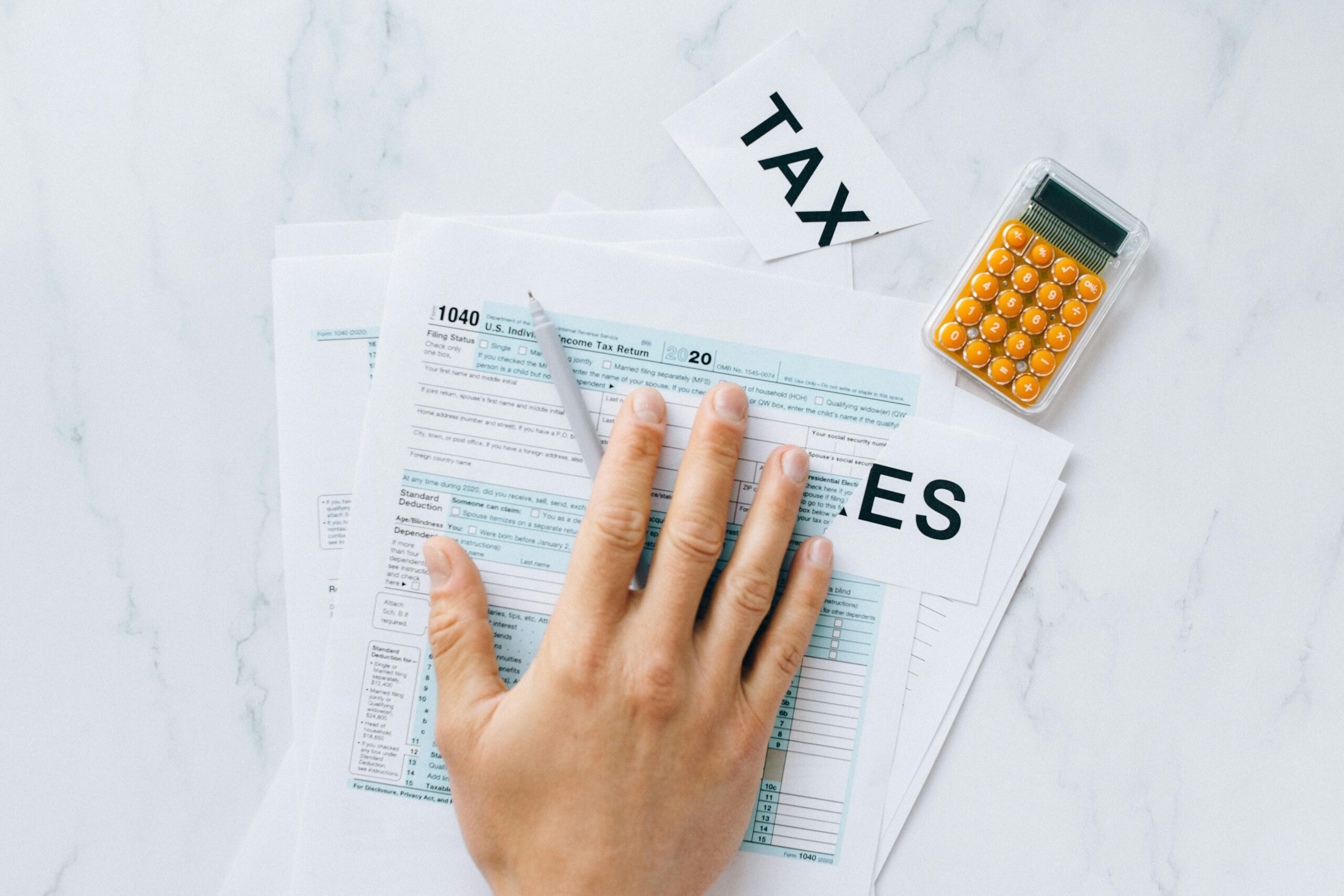
A California tax return is a document you file with the state of California to report your income and pay any taxes you owe. It’s similar to the federal tax return you file with the IRS, but specific to California’s tax laws.
The Different Types of California Tax Returns:
Form 540: The All-Purpose Tax Return
This is the granddaddy of California tax returns, the one most Californians will use. It covers your basic income taxes, deductions, and credits. Think of it as the all-purpose tax return for folks with regular wages, salaries, investments, and the like.
Form 540NR: For Our Non-Resident Friends
This form is for our non-resident friends who earned income in California during the year. Whether you’re here for work or a fun vacation that turned into a side hustle, this form helps you report and pay taxes on that California income.
Form 541: Reporting Your Business Income
Running a business in the Golden State? This form’s for you! Form 541 is where you report your business income and expenses, figuring out how much tax your California hustle owes.
Form 100S: For the S Corporation Folks
Got a fancy S corporation happening? This form is specifically designed for those businesses structured as S corporations to report their income and tax liability.
Conquering California Sales Tax Returns: A Step-by-Step Guide
California sales tax is a fact of life for many businesses in the Golden State. But filing your sales tax return doesn’t have to be a headache! This guide will walk you through the preparation process, ensuring you’re ready to submit everything smoothly.
Step 1: Gather Your Ammunition (Information)
Before diving in, you’ll need some key information to complete your return accurately. Here’s your checklist:
- Sales Tax Permit: Make sure you have your active California Sales Tax Permit number handy. This is essential for filing.
- Sales Records: Gather all your sales records for the reporting period. This includes the total amount of sales made, along with any exempt sales (items not subject to sales tax). You’ll also need to track sales by location, as California has varying tax rates depending on the county.
- Purchase Records (Optional): While not always required, keeping records of purchases you made to resell can be helpful. In some cases, you may be able to claim a credit for sales tax paid on these purchases.
- Filing Frequency: Determine your filing frequency. California requires most businesses to file sales tax returns quarterly, but there are exceptions based on your sales volume. You can find details on the FTB website to confirm your filing frequency.
Step 2: Choose Your Weapon (Filing Method):
California offers two main ways to file your sales tax return:
- Online Filing: The Franchise Tax Board (FTB) website offers a convenient online filing system. This is generally the recommended method for most businesses, as it’s faster and reduces the risk of errors.
- Paper Filing: Paper forms (BOE-401-A) are still available for those who prefer a non-digital approach. However, keep in mind that paper filing can be more time-consuming and prone to errors.
Step 3: Prepare for Battle (Filling Out the Return):
Whether you choose online or paper filing, the core information you’ll need remains the same. Here’s what to expect:
- Identifying Information: Enter your business information such as name, address, and permit number.
- Sales and Deductions: Report your total taxable sales for the period, along with any exempt sales. You might also be able to claim deductions for bad debts or returned merchandise.
- Tax Calculation: The online system will automatically calculate the sales tax owed based on your reported sales and location. For paper forms, you’ll need to calculate the tax yourself using the appropriate tax rate for your location(s).
- Payment Information: Enter your payment details if you owe any sales tax. The FTB website allows for electronic payments.
Step 4: Victory Lap (Filing and Keeping Records):
Once you’ve completed the form and calculated any tax owed, submit your return according to your chosen method (online or mail for paper forms). Remember to keep a copy of your filed return and all supporting documents for your records. The FTB recommends keeping these records for at least four years.
How to File California Tax Return
California offers two main methods for filing your state tax return: electronically and by mail. Here’s a breakdown of both options:
Filing Electronically:
This is the faster, more convenient, and generally preferred method. The Franchise Tax Board (FTB) offers a user-friendly online filing system with several advantages:
- Faster Processing: Electronic filing gets your return processed quicker, meaning you’ll receive your refund sooner if you’re due one.
- Reduced Errors: The online system automatically performs many calculations, minimizing the risk of errors compared to manual filing.
- Secure and Convenient: Filing online allows you to securely submit your return from anywhere with an internet connection and eliminates the need for mailing paper forms.
Here’s how to file electronically:
- Gather Your Information: Before starting, collect all your tax documents, including W-2s, 1099s, receipts for deductions, and any other relevant paperwork.
- Visit the FTB Website: Head over to the FTB’s. They offer a dedicated section for filing your tax return electronically.
- Choose Your Software (Optional): While the FTB website offers a basic online filing option, many tax preparation software programs integrate seamlessly with the FTB system. Consider using a trusted software program if your tax situation is complex or you want additional guidance.
- Follow the Instructions: The FTB website or your chosen tax software will guide you through the filing process step-by-step. Enter your information accurately, claim any eligible deductions and credits, and review everything carefully before submitting.
- Submit and Track Your Return: Once you’re confident about the accuracy, submit your electronic return. The FTB website allows you to track the status of your return and see when you can expect your refund (if applicable).
Filing by Mail (Paper Form):
While not ideal for most, paper filing is still an option for those who prefer a non-digital approach. Here’s what you need to know:
- Download the Forms: Obtain the appropriate California tax return forms from the FTB website. You’ll need Form 540 for most individual filers.
- Gather Your Information: Just like with electronic filing, collect all your necessary documents and information.
- Complete the Forms Manually: Carefully follow the instructions and fill out the paper forms by hand. Ensure all information is accurate and legible.
- Mail Your Return: Send your completed forms with any required attachments to the appropriate mailing address depending on whether you owe money or expect a refund (see previous answer for specific addresses).
- Keep Copies for Records: Maintain copies of your filed paper return and all supporting documents for your records. The FTB recommends keeping them for at least four years.
Where to Send California Tax Return
The mailing address for your California tax return depends on whether you owe money or are expecting a refund. Here’s a breakdown:
- If you owe a payment: Mail your return to Franchise Tax Board, PO Box 942867, Sacramento, CA 94267-0001.
- If you are due a refund: Mail your return to Franchise Tax Board, PO Box 942840, Sacramento, CA 94240-0001.
Important Note: This information applies to mailing paper tax returns. For most Californians, filing electronically is the recommended method. The Franchise Tax Board (FTB) website offers a user-friendly online filing system that eliminates the need for mailing and ensures faster processing.
Who Must File California Tax Return
In California, whether you’re required to file a state tax return depends on a few factors, including your income, filing status, and age. Here’s a breakdown to help you determine if you need to file:
General Rule:
- Minimum Income Thresholds: Even with minimal income, it’s a good idea to file a California tax return. This is because you might be eligible for tax credits or refunds that could put money back in your pocket, even if you didn’t owe any taxes.
However, there are minimum income thresholds to consider for mandatory filing:
The Franchise Tax Board (FTB) outlines specific income thresholds based on your filing status and age. If your income falls below these thresholds, you generally aren’t required to file a return. Here’s a quick reference:
- Single/Head of Household (Under 65):
- No Dependents: $21,561 in California Gross Income (AGI)
- 1 Dependent: $36,428 in California AGI
- 2 or More Dependents: $47,578 in California AGI
- Single/Head of Household (65 or Older):
- No Dependents: $28,761 in California AGI
- 1 Dependent: $39,911 in California AGI
- 2 or More Dependents: $48,831 in California AGI
Other Situations Requiring a Tax Return:
Even if your income falls below the thresholds mentioned above, you might still need to file a California tax return if any of the following apply:
- Self-Employed Income: If you earned income from self-employment, freelancing, or a side hustle, you’ll likely need to file a return, regardless of the amount.
- Received a 1099-MISC: This form reports miscellaneous income you received, and receiving one might trigger the need to file a return.
- Paid Estimated Taxes: If you paid estimated taxes throughout the year, you’ll need to file a return to reconcile those payments with your final tax liability.
- Claimed Tax Credits: To claim certain tax credits, like the Earned Income Tax Credit (EITC), you’ll need to file a return, even if you don’t owe any taxes.
- Owe California Taxes: If you owe any amount in state taxes, regardless of income level, you’re required to file a return.
How to Calculate Taxes in California
1. Gather Your Information:
Before calculating your taxes, you’ll need to gather all your income documents like W-2s, 1099s, and any records of deductions or credits you plan to claim.
2. Determine Your Filing Status:
Your filing status (single, married filing jointly, etc.) affects the tax brackets you’ll fall under. The FTB website provides a clear explanation of different filing statuses ([invalid URL removed]).
3. Calculate Your California Adjusted Gross Income (CA AGI):
This is your total income from all sources minus certain allowed deductions. Common deductions include student loan interest, contributions to retirement accounts, and charitable donations.
4. Find Your Tax Bracket:
The FTB website offers a tax bracket table that shows the income ranges and corresponding tax rates for each filing status.
Here’s how the calculation works with an example:
- Example : Single Filer Making $50,000
- Let’s say you’re single and your CA AGI after deductions is $50,000.
- According to the 2023 tax bracket table, for single filers, the income range for the 1% tax rate is $0 to $10,099.
- Since your income exceeds this amount, you’ll move on to the next bracket.
- The next bracket is for income between $10,100 and $23,942, taxed at a 2% rate. However, your income doesn’t fall within this range either.
- Continuing down the table, you find the bracket for income between $23,943 and $43,777, taxed at a 4% rate.
- This is the bracket your income falls under.
- To calculate the tax owed in this bracket, you would perform a simple calculation: Tax rate (4%) x the amount of income that falls within this bracket.
- In this case, it would be 4% x ($50,000 – $23,943) = $1,043.20 (assuming you have no other taxable income exceeding this bracket).
Important Note: The calculation above is a simplified example and may not account for all potential deductions, credits, or other tax complexities.
Conclusion:
California tax returns may seem daunting, but with the right information, you can conquer them! This guide provided an overview of different return types, filing methods, and basic tax calculation concepts. Remember, the Franchise Tax Board (FTB) website offers a wealth of resources to help you navigate your specific situation. Don’t hesitate to utilize their tools and guidance for a smooth tax season!
References:
- Franchise Tax Board (FTB): https://www.ftb.ca.gov/.
- FTB – Filing a Tax Return: https://www.ftb.ca.gov/forms/index.html.
- FTB – Electronic Filing:https://www.ftb.ca.gov/file/ways-to-file/online/index.html.
- FTB – Tax Brackets: https://www.nerdwallet.com/article/taxes/california-state-tax.
FAQs
Q: How long is the wait for a California tax refund?
A: The processing time for California tax refunds can vary depending on several factors, including when you filed your return, how you filed (electronic vs. paper), and if there are any complexities with your return.
Q: Can I track my California tax refund?
A: Absolutely! The FTB offers a convenient online tool to track the status of your California tax refund.You can access it here: https://webapp.ftb.ca.gov/refund/login.
To track your refund, you’ll need your Social Security number, filing status, and either the exact amount of your refund or the amount shown on line 540 (single filers) or line 541 (married filing jointly) of your return
Q: How much is California state income tax?
A: California uses a progressive tax system, meaning the tax rate you pay increases as your income rises.
Q: How can I check the status of my California tax refund?
A: There are three ways to check the status of your California tax refund:
Online: The FTB’s online refund tracker tool is the quickest and most convenient method: https://webapp.ftb.ca.gov/refund/login.
Phone: You can call the FTB refund hotline at 1-800-338-0505 (weekdays, 7 am to 5 pm PST) to speak with a representative and inquire about your refund status.
Mail: While not the fastest option, you can write to the FTB requesting your refund status. However, this method is generally discouraged due to slower processing times.







